Day 5: Paddling Beyond the Point – A Connected Journey
Turning the corner opened my eyes to stark shores I’d never seen before. Even the ones I had seen before, either on surfboard or on foot, took on a new character. Tiny coves and inlets were hidden at odd angles. Light winds allowed us to peer towards the deep blue depths to see volcanic remnants reaching toward the surface. Without the sun’s intense glare, we were able to weave through some of the tighter areas where even kayaks’ shallow drafts would get caught. Stories of boats floundering along these shores started to make more sense. Sometimes we would skirt wide from shore and even then large boulders and slabs lurked inches below the surface. Weaving through these slabs made for a fun day of paddling. Slipping out of my kayak and standing on these slabs with 30 feet of water on either side was even more enjoyable (time to reach into the hatch for a snack).
Beaches to land on became more sparse. I love rock formations, but they are also obstacles for safe exits and camping.
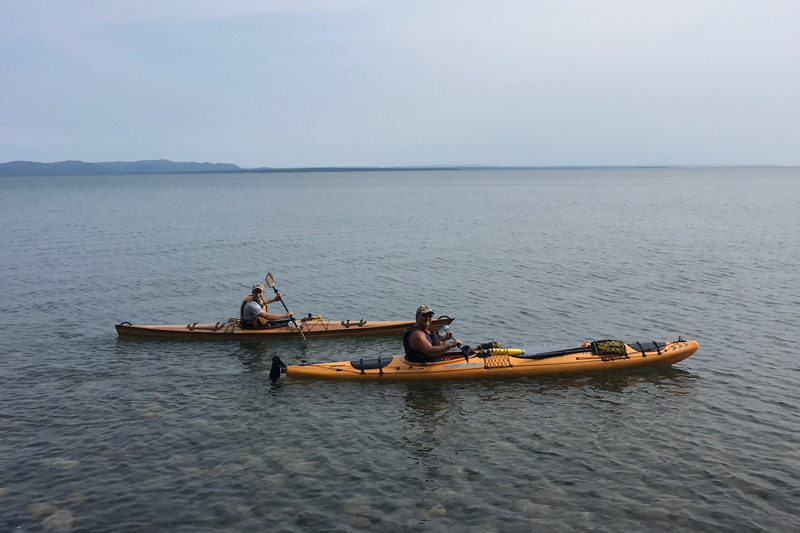
Along the way, some beaches are available for the public to camp on. However, these places are becoming increasingly exploited. Some are closed because of garbage left behind. Others are overcrowded. Many people who have been camping in the places for years question whether geotagging these locations sends a rush of unprepared campers into these otherwise elusive places. Sure, they exist on a map anyone can access, but perhaps through the time of researching a map and exploring a place with newfound wonder, we have a prerequisite level of respect for these places. As such, I aim to be sensitive about sharing exact locations of places under pressure. Places like the Sandy Islands are borderline busy, yet, even they demand a high level of respect and understanding to boat to a faraway island through waves, weather and shoals. Most visitors are from local camps, who like me, have been staring out at these islands for many years.
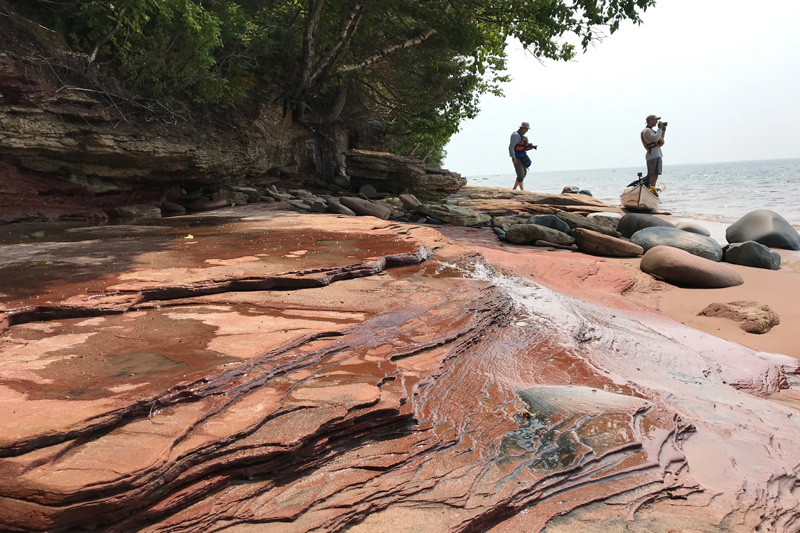
Closely linked to the topics of lands, localism, camping and protection, is looking back in time to treaties. In this region, the Robinson Huron Treaty of 1850 and Pennefather of 1859 with Batchewana First Nation represent these shores. However, many of the promises mentioned in the treaty were only recently or never granted by the crown. For example, Whitefish island was only returned to BFN in recent times. Not only does Batchewana have a claim to these areas, they hold an important role in them. They are campers, paddlers, and stewards as well.
In the end, our special places, especially the ones where we can camp, are becoming more known. It is our job to make sure people love and respect these places so they can be used sustainably in future generations. This includes learning about treaties and places like Mica Bay, where an illegal settler mining operation spurred what I understand as a lopsided and miscommunicated treaty. Knowing these places’ histories grow our understanding and reverence for the lake and each other. We need to inspire others to be stewards like ourselves.
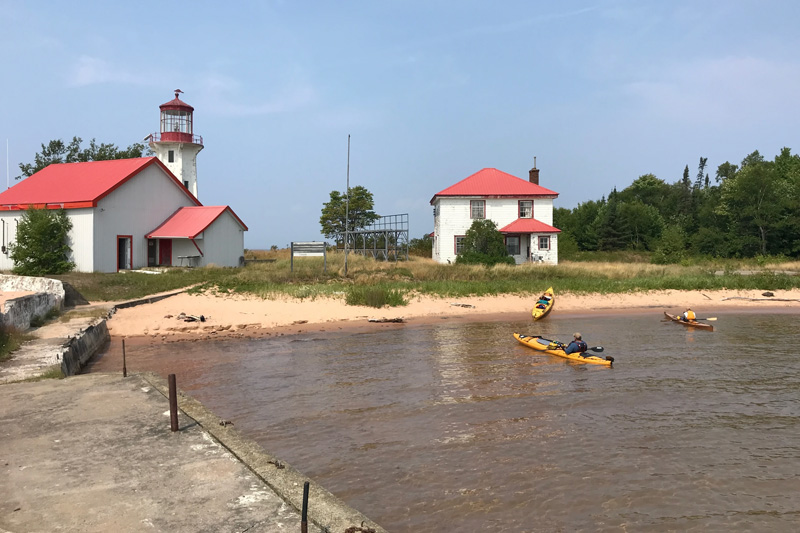
A friend of mine, Elliot shared a quick deed with me on a camping trip that I am passing on; pick up 10 pieces of garbage at any campsite you come across. This is one of the ways we can pay respect to these special places and promote stewardship in others.
These shores are the traditional territory of the Batchewana Band.
Overuse and mistreatment of crown camping places: Anyone can find them on a map but some geotagging can bring a wide audience, people who may not understand or respect the area the same way as you and I. Another thing is that these places are hard to get to. Shoals line many Sandy beaches where you wouldn’t expect them, and certainly wouldn’t see if the water was at all wavy.
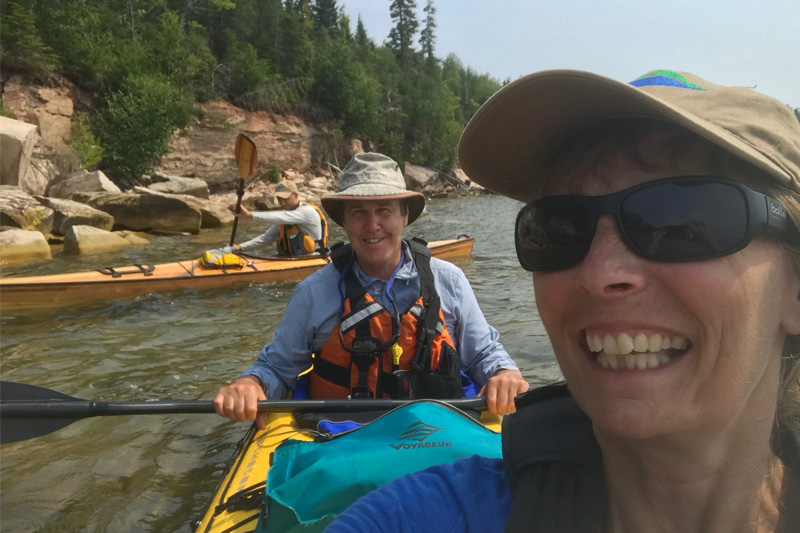
In the end, our special places, especially the ones where we can camp, are becoming more known. It is our job to make sure people love and respect these places so they can be used sustainably in future generations. We need to inspire others to be stewards like ourselves.
PS. Shoutout to Gail and Frank at the Voyageur Lodge and Cookhouse who surprised us with a care package to help fuel the journey ahead. Against the odds and without service it found its way to our tent site.
Cheers!
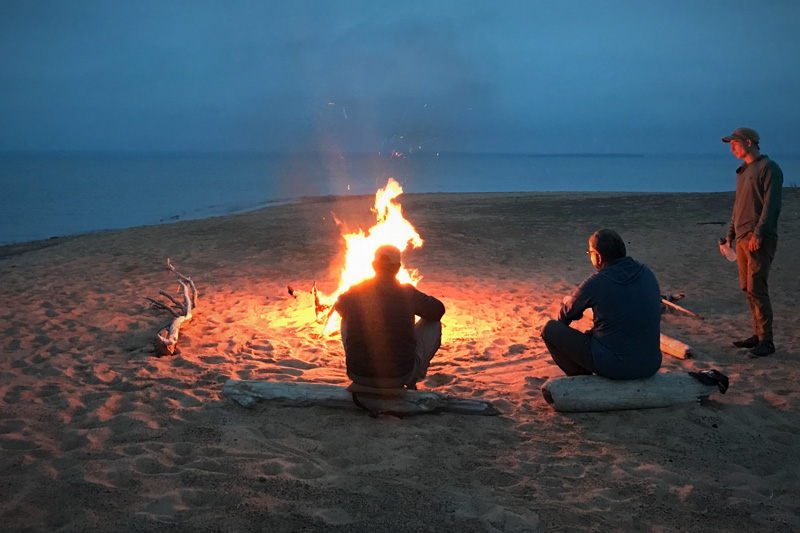
By: Peter Greve

